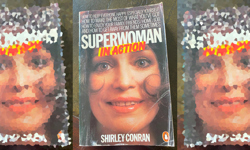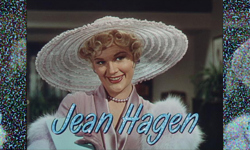
“It’s the weekend – what are we going to do? I know, let’s have a look in the local paper.”
In the regional press, we used to believe that was the age-old scenario up and down the country. And in the era of instant smartphone gratification, you might well think using local media for what’s on and leisure is dead as a dodo.
But there’s life in this old dodo yet. At Johnston Press, we know digital is the big future, however there’s still a huge print audience buying and reading our titles for leisure information.
To keep them reading, we have had to innovate around the type of content we offer, how it’s read - and presented – and, as ever, how we can do a better job with fewer resources.
Here are a few things we’ve done recently:
1. Know your audience
It would be great to think the local paper was the hip, must-have accessory of the millennial generation. Clearly it’s not.
Much of our content now is targeted at what the marketeers call the Flourishing Families and the Midlifers. These people have children, energy, time – and money - on their hands to spend on leisure activities.
They don’t just want an exhaustive phonebook-style listing of car boot sales and foraging walks.
They want digested, curated short-sharp recommendations for active stuff to do to fill the weekend. And unless you want them turning to their phones to find this information elsewhere, it has to be presented in print in an attractive, chunked-down, easy-to-read format.
2. Time to Give it a Go
Two years ago, we redesigned our weekly Milton Keynes Citizen and took the opportunity to completely re-imagine the ents section (branded Go for many years).
Out went the inadequate terrestrial TV listings (you’ll have heard of EPG?) and what we disparagingly referred to as ‘jumble sale directories’.
In came a spread of the ‘Top 10 Things To Do this Weekend’ (50 words each max) and a family activities spread.
The emphasis was on the active – the ‘Give it a Go’ section became a challenge to readers. Why not take an evening class in didgeridoo playing? Why not do Pilates, den building, bake a cake, a park run, a nature trail or read a book on mindfulness? And here, in short chunks was how, where and when to do it.
The section, designed by our template design manager Duncan Jackson was different to conventional news presentation. There are few headlines but there are labels to give the reader a sense of hierarchy – from the essential ‘Do Not Miss This Week…’ to ‘Just Down The Road’ (it’s not in our circulation area but we know you’ll drive 20 minutes to do it).
And when you’re back at home after an exhausting weekend of Flourishing Family fun and turn on the box, we give you… a guide to what’s new on Netflix, Now TV and Amazon Prime, and what to catch before it disappears from iPlayer.
3. Go goes national
We have been gradually rolling out the Go-branded ents sections to a huge number of our weekly titles for the past two years. Now you can find it in local papers from the Peterborough Telegraph to the Falkirk Herald, the Northampton Chronicle & Echo to the Halifax Courier.
Every town and every paper is different, so we offer local editors a framework of pages. Some Go sections are 24 pages, some just eight but they all have the same design, the same interchangeable elements and the same ethos.
Our central design team drops in generic national content, such as step-by-step recipe guides from our partnership with Delicious magazine or book and game reviews from PA Features. These elements are good in their own right and can be kept or seamlessly swapped out for local content.
In Sussex, we have a writer called Blaise Tapp, who does a popular column on a father’s approach to the bewildering world of Calpol, nappies and soft play. We realised early on this would chime with parents anywhere, so now ‘Life on Tapp’ drops into the column slot on the Go templates UK-wide.
Of course, Go isn’t just a print project – all the content goes online and drives significant audience for us.
4. Create once, use many times
Using leisure as a powerful reader hook is not just important in our weekly titles. We also have ten large daily titles covering cities including Leeds, Edinburgh, Portsmouth, Sunderland, Preston and Sheffield, as well as towns such as Hartlepool, North Shields, Blackpool and Wigan.
The weekend section has always been part of the Saturday content mix for these, as with dailies all over the UK, and each of ours was produced locally, the content emphasis being not just what’s on but wider leisure interests such as gardening and travel.
Here, the opportunity was to use our central design team to standardise the presentation of these sections into a really compelling leisure section, presenting the information using all the presentation methods I’ve explained for Go – chunking, recommendations, digests etc.
Led by design team leader James Trembath, the project now offers a suite of pages to daily editors each week. They get the same design and branding and a large selection of generic national pages but can drop in as much local content as they want.
As with Go, each Weekend section is the same but different, and centralisation has enabled us to drive complete consistency of quality across the portfolio.
The generic pages we offer each area have great content in TV, cinema, travel, gardening, gadgets etc, all collated by our central team from a variety of contributors.
Our group gardening page on August 9, for example, featured a lead story on pelargoniums from a contributor to the weekly Northumberland Gazette, a Sheffield Star columnist on summer birdlife and a round-up of five of the best garden benches from PA Features.
Our group reviews page had a review of the Super Smash Brothers game, written by our Midlands digital editor Damien Lucas, book and album charts from PA, and Spotify and podcast round-ups written by members of the central design team.
The point here is we create these pages once, centrally, and use them many times in lots of different places. And the people writing the content don’t necessarily write for any of the titles they are appearing in – this is about sweating our group assets and driving efficiency.
James Trembath and his colleagues upload the Weekend content centrally to all of our city websites – and then it’s over to the local teams to socialise it as part of their content calendar.
5. Stop them turning the page
In the March / April edition of this magazine, I wrote about how understanding how people actually read – through eyetracking and other work – should influence how we present information in print.
We are trying to combat the butterfly-like reading patterns of the modern reader with a variety of visual devices such as breakout panels, pull-quotes, summaries, digests, lists, recommendation boxes and a variety of reading lengths – in many ways mimicking the visual language of the web.
Just as we have applied centralised design and content to our Weekend section for Johnston Press daily titles, we introduced these principles to other daily sections.
The Guide is a Wednesday / Thursday (depending where you’re reading it) section looking forward to the weekend, with the emphasis on what’s on. Just as with our Weekend project, daily title editors are offered a set of pages with the same design, which they can populate locally, and some generic central content options (a Hollywood film is the same in Edinburgh as Portsmouth – why write and design the page more than once?).
If you saw the central cinema spread we did for that balmy week of August 2, you will have seen the main piece was an interview with Michael Douglas about his role in Ant Man and the Wasp. It’s a big read but it’s punctuated by a breakout panel on the five top Michael Douglas films, a pull-quote from Douglas, a graphic on the year Ant Man first appeared, a sidebar on another DC Comics movie and a digest panel summarising five of the best films out that week.
The multiple entry points and the ‘visual mosaic’ are there for reader engagement – we want to stop people turning the page; it doesn’t matter if they don’t read the 450-word long read, as long as they read something.
6. Nostalgia isn’t what it used to be
Everybody loves a bit of nostalgia and local papers are uniquely placed as archives of old pictures and content (unless you’re at one of those papers where some idiot apocryphally threw all the negs in the skip during a previous office move).
Another part of the Saturday offer in our daily titles now is the group Retro pull-out. Just like Weekend this has a common design which is populated locally, boosted by a centrally-produced centre spread.
But this is not the home of sepia-tinted horse and cart daguerreotypes. Each week features local content from one of the years 1970-2000 – ie what those Midlifers can actually remember (they may even be in the photos). The central spread reminds us what was in the pop charts, how much a pint of beer or milk cost, who was on the box and what was in the national news.
Once again, we’re trying to get a consistent quality that really appeals to the core audience, not just what’s interesting to someone in the local history society (although there’s a place for that of course). And guess what – it goes a bomb online!












